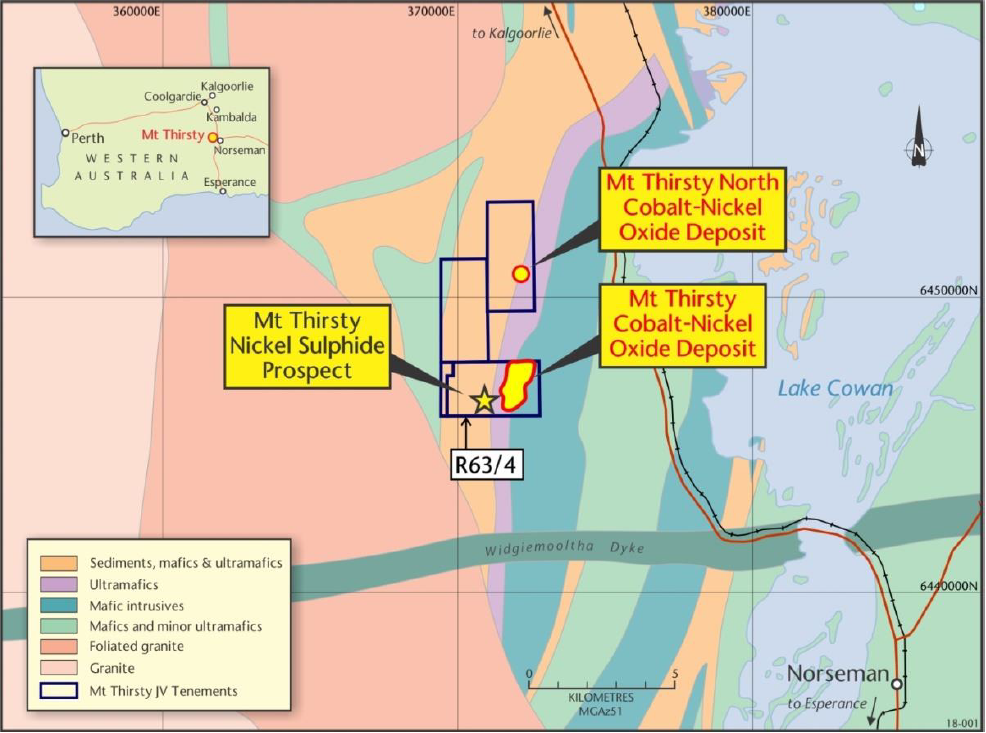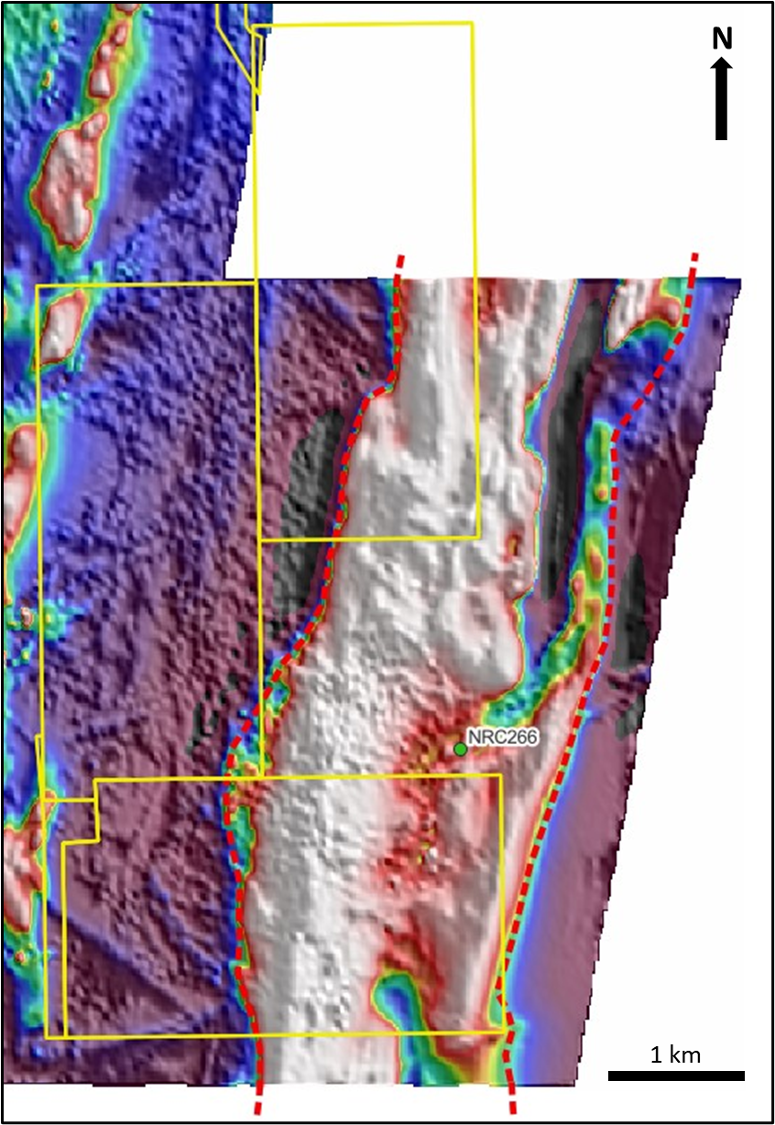Conico’s Mt Thirsty Project contains Australia’s most advanced genuine cobalt project with a Pre-Feasibility Study (PFS) completed in 2020. It also contains highly prospective ground for nickel sulphides and platinum group elements (PGEs). The Mount Thirsty Project is located 16 km northwest of Norseman, Western Australia and is a 50/50 Joint Venture between Conico Ltd and Greenstone Resources. The Project is close to all necessary infrastructure (rail, road, power, gas, water, townsite, fibre optic and seaport) and in a mining focused state.
Mount Thirsty: Geology
The Mt Thirsty Cobalt Deposit is hosted in a strongly weathered ultramafic peridotite rock located between a sediment-ultramafic-basalt sequence to the west and a thick gabbro-pyroxenite unit to the east. Weathering and supergene enrichment processes have produced the deposit which is enriched in cobalt, nickel and manganese. The manganese and cobalt contents are particularly high compared to most nickel oxide deposits located in Western Australia.
Running through the tenement package is the Mt Thirsty Sill Complex, a prospective ultra-mafic layered intrusion comprised of pyroxenite, peridotite, serpentinite and gabbro. The sill is intruded into komatiites and sedimentary rocks, all of which are crosscut by pegmatites and Proterozoic dykes. This unit is several hundred metres thick and extends several kilometres below surface. It is prospective for nickel, copper and PGEs. The sill has had multiple cycles of intrusions, all of which provide a new prospective opportunity. The komatiite host rocks contain existing nickel sulphide mineralisation and are further prospective for the same style of mineralisation.
Mount Thirsty: Mineralisation
The cobalt-nickel mineralisation typically starts from near surface to around 12 metres below surface where goethitic clays are present with an iron composition of around 30%. Deeper down the colour of the goethitic clays darken as the asbolane (manganese oxide mineral) content increases. This darkening marks the start of the cobalt enriched, high-grade portion of the deposit. Further down, the goethitic iron oxide colouring or dark colouring due to the asbolane diminishes with greenish nontronite and serpentine minerals becoming dominant (lower saprolite). Near the bottom of the lower saprolite zone, chalcedonic banding is common. High-grade cobalt is almost always associated with dark asbolane.
Existing nickel sulphide and PGE mineralisation within the Mt Thirsty Sill Complex and komatiites is associated with disseminated and cm-thick sulphide stringers. Blebby sulphide mineralisation is also seen in the Proterozoic dykes.
Mount Thirsty: Work Conducted
Pre-Feasibility Study
Completed in 2020 (Amec Foster Wheeler Australia Pty Ltd)
Resource and Reserve update
Resource and Reserve update
Scoping Study
Completed in 2017
Drilling
696 Air Core (AC) holes, 14 Reverse Circulation (RC) holes, 21 Rotary Air Blast (RAB) holes, and 7 Sonic Core (SC) holes. Grid spacing is sufficiently close for the style of mineralisation at 50 m x 40 m on the eastern side and 50 m x 80 m on the western side.
Mount Thirsty: Logistics
The Mount Thirsty Project is located 16 km northwest of Norseman, Western Australia. The Project is close to all necessary infrastructure (rail, road, power, gas, water, townsite, fibre optic and seaport). Access is via vehicle on a combination of sealed and un-sealed roads.
The Kalgoorlie-Norseman Cobalt Region
The Kalgoorlie-Norseman Cobalt Region offers a compelling alternative, being an advanced, low capital cost and high-quality cobalt project located in the stable mining jurisdiction of Western Australia. Find out more about the potential of this region by visiting the dedicated website










